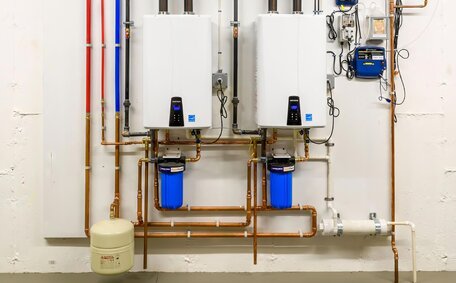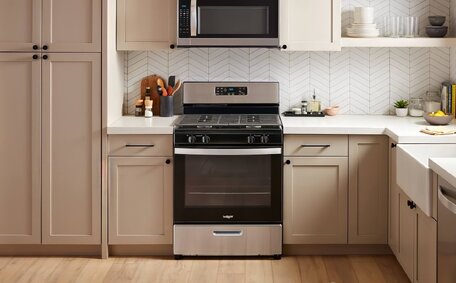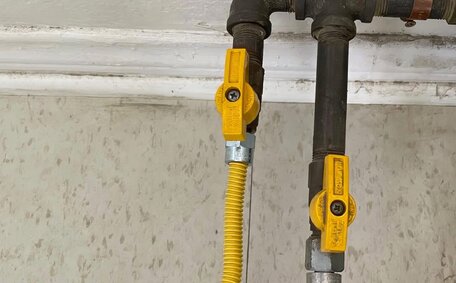
How Hard Water Hurts Hot Water Heaters
Hard water leaves mineral deposits in heaters, pipes and tanks. This limescale reduces efficiency, lifespan and hot water availability. Contact us for affordable water softening solutions.
Read MorePipe relining is an innovative technique preventing the build-up of grease and food residue within pipes. It involves inserting a flexible epoxy resin liner into the existing pipe, which coats the inner walls and creates a smooth, impenetrable barrier against fats oils build-up. This technique stops fats, oils and food debris from adhering to pipe interiors, averting blockages.
Our relining service seals breaches in damaged pipes, restoring their structural integrity and flow capacity. Being a trenchless method, it effectively tackles blocked pipes without causing disturbance to your property. The liner moulds to the inner contours of your home’s pipes, proactively preventing blockages from forming.
Once cured, the relined pipes rival the quality of new installations.
In this article, we’ll delve into the key advantages of pipe relining and examine how they can effectively prevent grease and food blockages. We’ll discuss how relining combats fat and oil clogs, highlight contemporary technology, and offer maintenance tips to prevent future drainage issues. Our goal is to inform homeowners about pipe relining as a superior method for keeping drains clear and operational.
Additionally, you’ll find responses to frequently asked questions about the relining process.
Pipe relining hinders grease and food waste build-up via its seamless epoxy resin barrier. The seamless interior coat acts as a barrier, preventing waste particles from accumulating inside your pipes over time.
The flexible liner perfectly conforms to the internal surfaces of damaged pipes, showcasing the effectiveness of pipe relining in preventing build-up. It seals cracks, gaps, and holes where residue would normally collect. With its smooth surface, the relined pipes offer no foothold for grease, fats, or solids to adhere.
Pipe relining can also rejuvenate older pipes, fully restoring diameters constricted from internal corrosion and sediment accumulation. This improves water flow and reduces the likelihood of downstream clogs, demonstrating how efficiently relined drains can mitigate issues. Thanks to our relining efforts, this durable epoxy blockade can prevent blocked pipes, remaining unobstructed, free from the clingy presence of oils, grease, and other residues year upon year.
Another advantage is relining’s capacity to enhance your drainage system without the need for excavation.
Not having to excavate and replace pipes means you can clean your surrounding soil stays undisturbed, with no way underground for contaminants. Intrusive tree roots can seriously harm your plumbing by seizing waste particles travelling down the drain. Relining pipes in-situ starves intruding roots thereby preventing waste particles that make their way inside from taking hold.
The robust, seamless epoxy barrier formed by relining is crucial in preventing blockages in your sewer system by stopping the accumulation of grease, fats, oils, and food debris.
The pipe relining process, conducted by skilled technicians, utilises state-of-the-art technology to rapidly and efficiently rehabilitate damaged pipes. It begins with a CCTV drain inspection, which explains why we meticulously assess the interior condition of pipes and locate any problem areas. high-definition cameras provide real-time visuals identifying problems like cracks, leaks, and obstructions, frequently due to oil and grease in your sewer line.
After the assessment, our team uses sophisticated methods for thorough drain cleaning to remove all traces of grease and oil from your drainage system. Performing this step can clear your pipes from any built-up deposits or debris, ensuring the job done is thorough and effective. We may also use specialised cutting tools to clear your blocked pipes more effectively.
We impregnate a flexible liner with a felt exterior in wet epoxy resin. Subsequently, this liner is fed into the drain through an access point and inflated within the pipe, travelling down your conduits with the aid of compressed air. The liner adheres and moulds to the interior walls, sealing and repairing potential burst pipes and providing structural reinforcement.
As the resin undergoes curing, it transforms into a smooth, corrosion-resistant barrier that not only foregoes future buildup but also withstands the temperatures of your hot water system. We use high-pressure water jets and UV light to tackle severe blockages and to expedite the curing process. Typically, the whole operation spans just a few hours, swiftly reinstating function inside old clay pipes and saving you from the mess and cost associated with traditional methods to clear blocked conduits.
Our modern relining practices can rehabilitate pipes up to 91 metres in length, guaranteeing your drain can function without hindrance and will be meticulously cleaned up after the process. Offered in various diameters, the liner ensures that a blocked drain can be effectively repaired, whether in your sewer main lines, branch lines, kitchen sinks, and pipes of narrower dimensions. To address every nook and cranny, including elbows, joints, and bends, we even offer tailored solutions for your blocked drain.
Our skilled Picnic Point Plumbing experts continuously enhance their knowledge on the newest techniques and products to ensure your drain is serviced professionally with the latest solutions. We would highly recommend our repairs for their enduring nature, minimal invasiveness, cost-effectiveness, and industry-leading warranties. Get in touch with our plumbing services team to understand how relining can revitalize your pipes.
Pipe relining provides numerous long-term benefits that make it a smart investment for homeowners. Unlike traditional pipe replacement, relining is a permanent solution that prevents future blockages and damage.
The smooth epoxy barrier, effective for 50-100 years, eradicates cracks, leaks and corrosion that promote buildup. Even stubborn residues such as food, grease, oils, and soap scum will wash away down drain, no matter the challenge, especially when aided by boiling water rather than clinging to the pipe’s interior.
A relined drain pipe will steadfastly uphold optimal water flow rates and you need know its hydraulic capacity has been restored too. The full diameter is restored, ensuring food particles and other waste glide smoothly into the pipe, improving drainage performance. There are no more surprises from clogged or slow-flowing drains.
Trenchless relining saves time, money and disruption compared to digging up and replacing pipes. Your property remains unblemished with no landscaping damage, ensuring satisfaction with the non-intrusive process. You’ll be pleased to know your project usually takes just one day with no major renovations.
Pipe relining strengthens ageing pipes against challenges like root intrusion and ensures they effectively manage storm water. It prevents infiltration of roots that can damage your pipes and grab onto waste particles. The structural reinforcement also strengthens pipes against settlement and earth movement.
When considered financially, relining can save substantial amounts as it is a more economical alternative than other methods. And it comes with long warranties up to 10 years for residential projects and 50 years for municipal relining. Overall, relining stands out as a significant drain repair technique, providing enduring value by keeping pipes clear and functioning like new.
To take care of your pipes after relining is crucial to prevent future blockages. Here are some useful tips for households and businesses in the Picnic Point area:
By implementing these handy tips, you can minimise pipe deposits and keep your plumbing flowing smoothly for years after relining. Contact us if you notice any signs of blocked drains - we’re ready to help!
How long does pipe relining take?
The pipe relining process usually takes just one day to complete for a typical residential home. While the liner cures and hardens, we may need to temporarily shut off the water supply, returning things to what they were promptly. We’ll keep you informed of any service interruptions, which usually come out as telltale signs blocked pipes being repaired.
After thoroughly cleaning and inspecting the pipes, our skilled Picnic Point Plumbing drain services can install the epoxy resin liner swiftly, providing a solution for your blocked pipes in just a few hours. The curing phase, taking 2-4 hours to complete, enables us to restore water flow and full functionality of your plumbing system.
How long do relined pipes last?
Properly installed pipe liners are built to last for decades. Our pipe patching with high-quality epoxy resins come with industry-leading warranties of up to 10 years for residential projects and up to 50 years for municipal and commercial relining jobs. With periodic inspections and proper care, a relined pipe, placed down skillfully, can easily outlast the lifetime of the original piping.
When is it time to reline your pipes?
Indicators of a blocked sewer in your plumbing include slow drains, frequent clogs, musty odours from drains, visible leaks or water damage, and recurrent drain backups. Our Picnic Point Plumbing team is adept at conducting a drain camera inspection to assess the inner state of your drain pipes and acquire a definitive assessment for the need for relining.
We can provide pipe rehabilitation solutions for ageing and damaged pipe systems throughout homes in Picnic Point.
Can relining work on elbows, joints and bends?
Yes, modern pipe relining techniques allow for repairs even on elbow joints, bends, branches and other areas typically prone to blocked drains. Our Picnic Point Plumbing experts have access to advanced liners and inflation bladders that can navigate twists and turns. This allows relining of your kitchen sink drains, turning them into a veritable castle against clogs, including main sewer lines, lateral connections and other complex pipe layouts.
How do I know if my pipes need relining?
There are several warning signs that indicate your pipes are in poor condition and would benefit from pipe relining. Being aware of these signs can help you take action before minor drainage issues turn into major blockages or pipe failures.
Slow-draining fixtures are one of the most common signs of trouble. If it takes longer for the water down the sink, shower, or toilet to drain, your pipes may be clogged with buildup or obstructed by invasive roots. Partial blockages restrict flow and reduce drainage capacity.
Gurgling sounds from pipes when fixtures are used often signals an underlying issue. It means air and water are having trouble passing through the drainage system. The culprits are often tree root intrusions, cracks, leaks, and various blockages.
Foul sewage odours wafting up from drains or near external pipe access are a red flag, often indicating a hindrance to water down the drain. When waste cannot flow freely, it may back up and permit gases to seep into your home. A briny, rotten egg smell indicates sewer gas where water can also trap and neutralize the odour.
Leaking pipes, often coated with cooking oil and other substances, should be addressed promptly to prevent further deterioration. Even minor leaks in drain joints or decaying pipes can lead to the insidious intrusion of roots and residues.
Any signs of water damage around pipes may indicate a serious leak requiring immediate repair. Stains on walls or ceilings, damp carpets, and pools of water warrant close inspection.
Persistent drainage backups demanding plunging activity could be the hallmarks of severely blocked pipes. Clogs from grease, soap buildup, or other debris can recur without proper pipe rehabilitation.
A drain camera inspection by a plumber is the best way to assess pipe damage and determine if relining is right for your home. Our Picnic Point Plumbing team understands the required actions, with expert technicians poised to diagnose and suggest solutions.
Do not delay until an emergency arises; minor drainage problems can deteriorate over time. Contact us today to learn if pipe relining can restore your plumbing to working order.
Hard water leaves mineral deposits in heaters, pipes and tanks. This limescale reduces efficiency, lifespan and hot water availability. Contact us for affordable water softening solutions.
Read MoreIt’s important to routinely check your gas appliances for any issues. Signs of problems include gas leaks, strange sounds, odd smells and more. Have a professional inspect your gas appliances annually and service them regularly for safety.
Read MoreUpgrading your gas meter is a simple process completed by registered technicians. It involves disconnecting your gas supply for 15 minutes to swap the old meter for a new digital smart meter. The upgrade is free and improves accuracy.
Read MorePicnic Point, 2213 NSW
We will call back as soon as possible.




